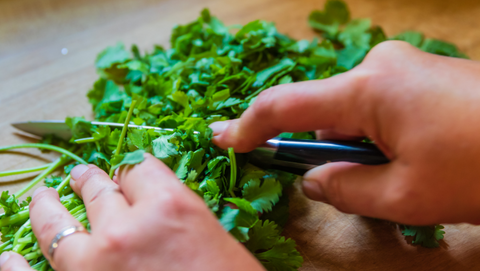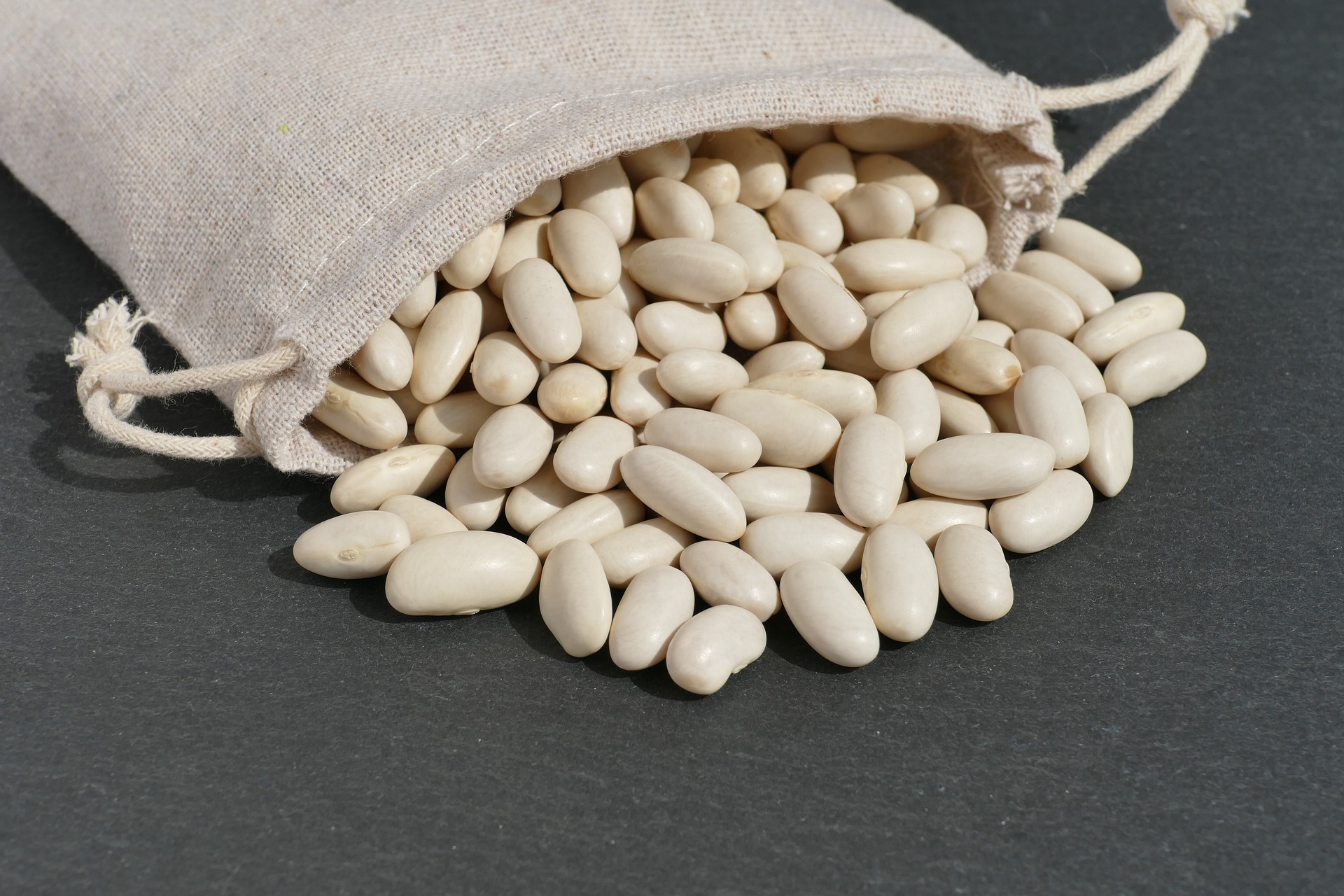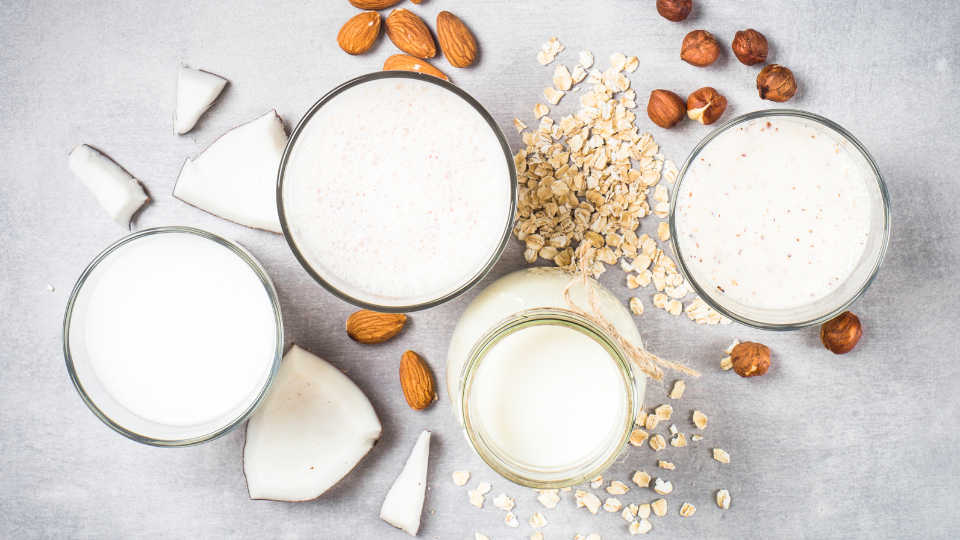Fruit and Vegetable Guide Series: Cilantro

Cilantro, also called Chinese parsley and fresh coriander, is an herb used predominantly in Mexican, Asian, and Caribbean cooking. Cilantro, with its bright green leaves that resemble flat-leaf parsley, is currently sold in most supermarkets and has become a popular seasoning. Available year-round, cilantro is also easily grown at home in the garden. The seed that cilantro produces is the spice coriander. Sprinkle whole or chopped leaves over a variety of dishes for a flavorful garnish.
Utah Local Fresh Season: Available in local grocery stores year-round.
Availability: Cilantro is available year-round in local grocery stores. This herb is typically sold in bunches.
Eating: Cilantro can be eaten fresh, cooked, or dried. All parts of the plant are edible. Preparation method depends on the recipe.
Selecting: Select cilantro bunches that are brightly colored with fresh, fragrant leaves. To make sure you’re not buying a bunch of parsley, give it a quick sniff to check for its distinctive aroma. Avoid bunches with wilted, yellowed or blackened leaves.
Cleaning: Plunge into a bowl full of cold water. Swirl around and let cilantro sit for a while. Dirt and other debris will settle and leaves will float to the top. Repeat procedure if cilantro is extra dirty.
Storing: Like most fresh herbs, cilantro is very perishable. Fresh cilantro loves cool temperatures and should be stored in the refrigerator. If you are storing the herbs in the refrigerator for several days, cover loosely with plastic bag with two to three layers of paper towels. For longer storage, place the cilantro bunch in a container of water like a bouquet of flowers. Cover the top loosely with a plastic bag. Refrigerate up to 1 week, changing the water in the container every two days.
 Preparing: Wash cilantro just before using, and blot dry with paper towels. When chopping cilantro, make sure the leaves are well dried to prevent them from sticking to the knife or scissor blades. To chop, use a chef’s knife on a cutting board. You can also place leaves in a glass measuring cup or small bowl and cut into small pieces with kitchen scissors.
Preparing: Wash cilantro just before using, and blot dry with paper towels. When chopping cilantro, make sure the leaves are well dried to prevent them from sticking to the knife or scissor blades. To chop, use a chef’s knife on a cutting board. You can also place leaves in a glass measuring cup or small bowl and cut into small pieces with kitchen scissors.
Nutrition Highlight: Cilantro leaves are a fair source of fiber and contain antioxidants. Cilantro contains vitamin A, C, and K.
Growing Cilantro: Cilantro can be grown in pots inside the home all year. Keep soil moist but well-drained. For more information on how to grow cilantro go to https://extension.usu.edu/yardandgarden/research/cilantro-coriander-in-the-garden
Preserving Cilantro: Cilantro tastes best when used fresh and added near the end of the cooking time. It loses flavor when dried or exposed to heat.
For instructions for freezing herbs go to https://nchfp.uga.edu/how/freeze/herbs.html
References
- "So Easy to Preserve", 6th ed. 2014. Bulletin 989, Cooperative Extension Service, The University of Georgia, Athens. Revised by Elizabeth L. Andress. Ph.D. and Judy A. Harrison, Ph.D., Extension Foods Specialists.
- Andrew, J. Cilantro and Digestion. SFGate. https://healthyeating.sfgate.com/cilantro-digestion-9167.html
- https://eatfresh.org/find-a-recipe
- http://www.cuisinecuisine.com/CookingTipsandTricks.htm#Cleaning%20Cilantro
- Drost, D. and Miller, C. Cilantro/Coriander in the Garden. Utah State University Yard and Garden Extension. https://extension.usu.edu/yardandgarden/research/cilantro-coriander-in-the-garden
Authors
Amanda H. Christensen, Extension Associate Professor
Guide Editors: Heidi LeBlanc and Debra Christofferson
Additional Editors: Gayla M. Johnson, Eileen Milligan, Jenna Dyckman
*This publication is a part of a series created by Create Better Health and Utah State Extension Employees. It has been reviewed and updated to include current evidence-based research and recommendations.
Related Nutrition Articles






